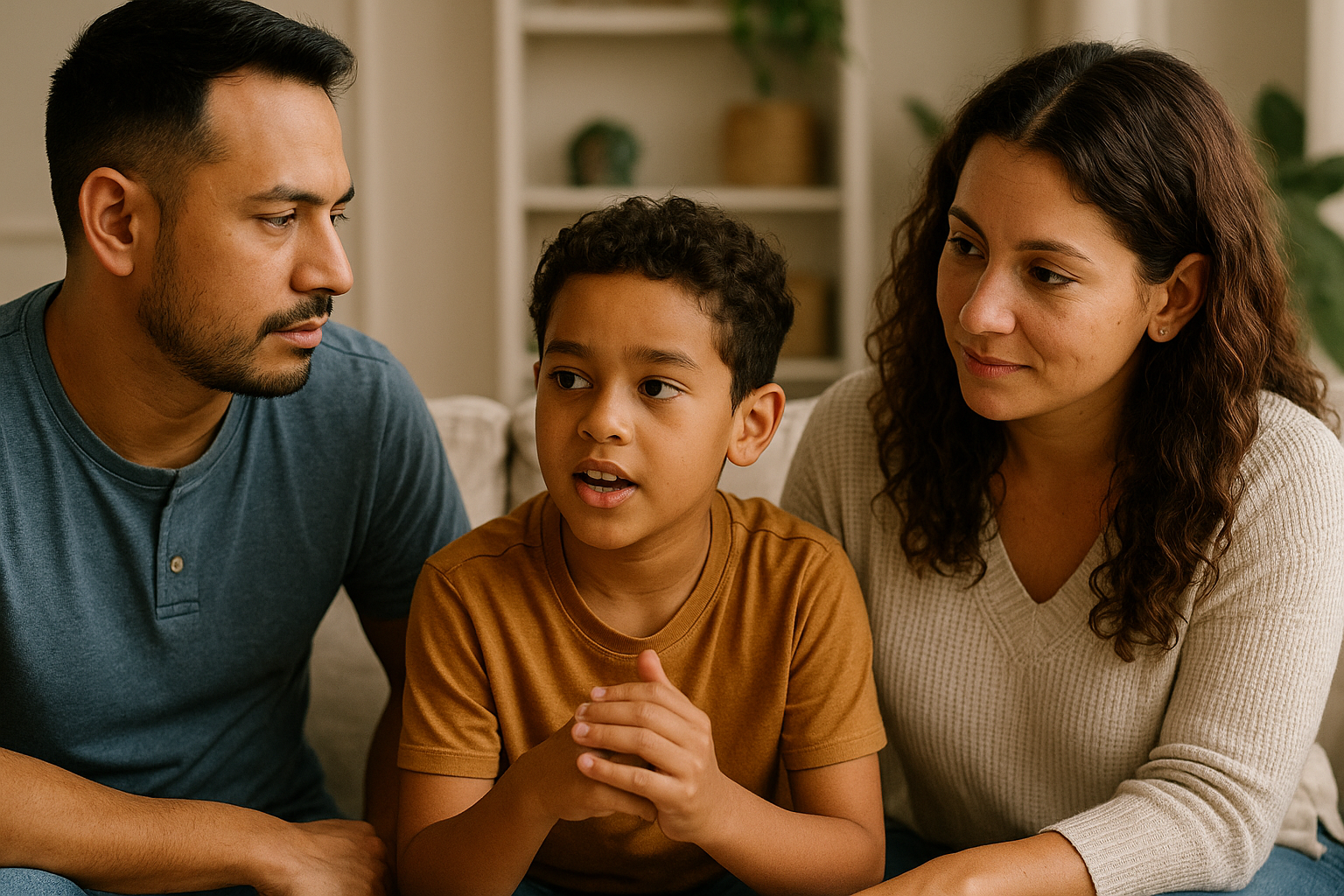Listening may sound simple, but in parenting, it’s one of the most powerful tools for building trust, connection, and emotional safety. When children feel heard — truly heard — they are more likely to cooperate, share openly, and develop strong communication skills of their own.
Yet in the chaos of daily life, true listening often gets lost between multitasking, quick instructions, and reactive responses. This article will show you how to practice active listening with your child, transforming not only your conversations but your relationship as a whole.
What Is Active Listening?
Active listening means more than just hearing words. It involves:
- Giving your full attention to your child
- Showing empathy and understanding
- Reflecting back what they’ve said to confirm understanding
- Responding in a way that validates their feelings
It’s about making your child feel seen and understood — even if you don’t agree with everything they’re saying.
Why Active Listening Matters for Kids
Children who grow up with active listeners as caregivers:
- Build stronger self-esteem: “My voice matters.”
- Develop emotional intelligence: They learn to name and express feelings.
- Communicate more openly: They’re more likely to share challenges and fears.
- Cooperate more: Feeling heard reduces defiance and power struggles.
- Learn empathy: They mirror the way they’ve been listened to.
In short, when you listen deeply, you teach them to listen deeply, too.
The Common Mistakes Parents Make When “Listening”
- Multitasking: Trying to listen while scrolling on your phone or cooking.
- Jumping to solutions: Offering advice before fully understanding the problem.
- Minimizing feelings: Saying, “It’s not a big deal,” or “Don’t worry about it.”
- Interrupting: Cutting them off mid-sentence to correct or redirect them.
These habits may seem small, but over time they teach children that sharing isn’t worth it.
The Elements of Active Listening
1. Give Your Full Attention
Put away devices, turn off distractions, and physically position yourself at their level. Eye contact and open body language signal that you’re fully present.
2. Reflect and Paraphrase
Repeat back or summarize what they’ve said to show understanding.
Example:
Child: “My friends didn’t play with me at recess.”
Parent: “It sounds like you felt left out today.”
This helps clarify their feelings and makes them feel validated.
3. Use Open-Ended Questions
Encourage deeper sharing by avoiding yes/no questions.
Instead of:
“Did you have a good day?”
Ask:
“What was the best part of your day? Was there anything hard?”
4. Name Their Emotions
Help them identify what they’re feeling: “You seem frustrated,” or “It sounds like that really hurt your feelings.”
Building Active Listening Into Daily Life
1. Establish “Listening Moments”
Set aside intentional time for open conversation:
- Before bedtime: Share daily highs and lows.
- During car rides: Ask reflective questions.
- Over meals: Make it a no-screens, no-rush connection time.
Even 10–15 minutes of undivided attention can transform your relationship.
2. Use Play as a Gateway
Children often open up during play. Whether it’s drawing, building, or imaginative play, you can gently engage them in conversations about their experiences and emotions.
3. Pause Before Responding
It’s tempting to jump in with advice, but children need space to express themselves. Take a breath, let them finish, then respond with empathy.
How to Handle Tough Conversations
1. Stay Calm — Even When They’re Emotional
If your child shares something upsetting, resist reacting with immediate judgment or strong emotion. Respond with curiosity, not panic.
Say:
“Thank you for telling me. That must have been hard. Let’s figure this out together.”
2. Avoid Overcorrecting
If they say something wrong or exaggerated, don’t interrupt to “fix” it. Let them finish their story before gently clarifying.
3. Validate Before Problem-Solving
Before offering solutions, acknowledge their feelings:
“I can see you’re really upset. That makes sense.”
Only after validation should you move toward brainstorming solutions.
Adapting Active Listening by Age
Toddlers
- Use simple language and lots of reflection: “You’re sad because we left the park. It’s hard to leave when you’re having fun.”
- Get down to their eye level for better connection.
Preschoolers
- Use stories and drawing as tools to help them express complex emotions.
- Reinforce sharing with positive feedback: “Thank you for telling me how you feel.”
School-Age Children
- Ask specific, open-ended questions about school, friends, and feelings.
- Give them space to talk without immediate correction.
Tweens and Teens
- Respect their privacy but stay available.
- Avoid lecturing — focus on understanding their perspective.
- Show curiosity instead of judgment: “That’s interesting. Can you tell me more?”
Overcoming Challenges to Active Listening
“I don’t have time.”
Even short bursts of undivided attention (5–10 minutes) can have big impact. Prioritize quality over quantity.
“They never open up.”
Start with neutral topics. Avoid interrogations. Build trust over time by responding without overreacting.
“I get too emotional.”
Take a pause. If needed, say: “I need a moment to process, but I want to hear everything you have to say.”
Long-Term Benefits of Active Listening
When you practice active listening consistently:
- You reduce conflicts and tantrums.
- You build a foundation for open communication in the teen years.
- You help your child grow into an empathetic, emotionally intelligent adult.
It’s not just about hearing them now — it’s about shaping how they communicate for life.
Final Thought: Listening Is Love
Active listening isn’t simply a parenting strategy — it’s an act of love. It tells your child: “You matter. Your voice matters. Your feelings are important to me.”
When children feel truly heard, they don’t just talk more — they trust more. And in that trust lies the foundation for resilience, cooperation, and a lifelong bond
